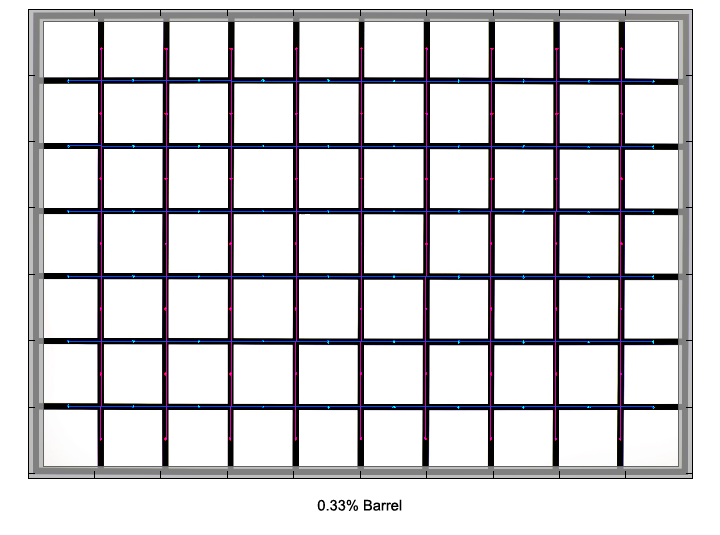|
Page 2 of 3

Distortion
No surprises here: the lens shows almost no distortion, but anything else would have been a major disappointment for a macro prime.

The chart above has a real-world size of about 120x80cm.
Vignetting
The light fall-off towards the image borders is a little pronounced at the largest aperture setting, reaching a value of almost 1.4 stops here. As usual, stopping down resolves the issue. From f/5.6 onwards vignetting should no longer be a visible issue for most subjects.
We're performing our vignetting analysis based on
(uncorrected) JPEGs straight from the camera. The JPG engine of the Nikon D3x features a rather flat
gradation curve, thus has a moderate contrast characteristic, resulting in comparatively low vignetting figures - the
corresponding Canon figures are roughly 40% higher due to the more
aggressive default contrast setting.

MTF (resolution)
The lens delivers very good resolution in the image center at the maximum aperture, increasing to excellent values stopped down to medium apertures.
Borders and corners follow a bit behind with very good resolution throughout most of the tested aperture range. Stopped down to medium aperture settings, the borders even manage to reach excellent sharpness, too.
From f/11 onwards, diffraction starts to take its toll and reduces the achievable resolution. The lens can be stopped down to f/32, but at this setting not much resolution is left. This is a physical limitation and not a design flaw of the lens.
It's worth to mention that the lens showed no focus shift when stopping down.
Please note that the MTF results are not directly comparable across the different systems!
Below is a simplified summary of the formal findings. The chart shows line widths
per picture height (LW/PH) which can be taken as a measure for sharpness.
If you want to know more about the MTF50 figures you may check out the corresponding
Imatest Explanations

Chromatic Aberrations (CAs)
Chromatic aberrations (color shadows at harsh contrast transitions) range from 1 to almost 1.5 pixels on the image borders, slowly increasing by stopping down.

Bokeh
One of the primary usage scenarios for a large aperture lens is to seperate the main subject from the background. In such an image the quality of the bokeh (out-of-focus blur) is of major significance.
The lens produces quite smooth background blur wide open, even in the sometimes critical transition zone.
Thanks to rounded aperture blades, background highlights show a nice circular shape... as long as they are not too far away from the image center. Towards the image corners, highlights are cut off due to mechanical vignetting, even when slightly stopped down. This is probably due to the rather small diameter of the front lens.
Apart from the cut-off, highlights are evenly filled and show almost no outlining. However, there is a visible degree of bokeh fringing at the borders (see next section).

Bokeh Fringing
Bokeh fringing is a common issue with relatively fast glass. It's visible as halos of different colors in out-of-focus areas - magenta (red + blue) in front of the focus point
and green beyond.
Typical for most primes in this class, the Nikkor shows a noticeable amount of bokeh fringing at large aperture settings, which can of course be reduced by stopping down.
As mentioned earlier, these shots also illustrate that there is no focus shift by stopping down.
|